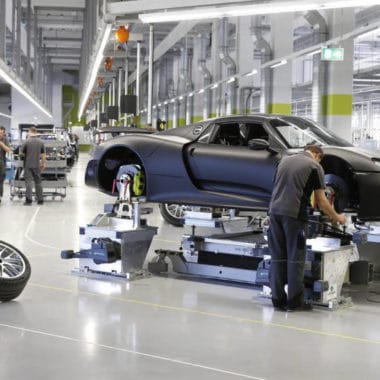Do you know which car company produces greater profits per vehicle than any other manufacturer? Is it Toyota? BMW? Ford? I will give you a hint: its birthplace was in Stuttgart and its name isn’t Mercedes-Benz.
If you guessed Porsche, you’d be correct!
Apart from being one of the most iconic brands in the world, Porsche also tells a fantastic story about a firm undergoing a transformation. The story started in the mid-1980s when Porsche saw its sales orders drop 70% (1986-1993). Reduced sales, coupled with rising costs of production and a global economic recession resulted in profits of more than $250 million turning into a loss of nearly $200 million in a few short years. The company was approaching bankruptcy and was hanging on for its life. If there was ever a burning platform, Porsche was it.
In 1992, the company changed its executive leadership, and Wendelin Wiedeking, an engineer, took the helm. What followed was a complete and drastic transformation of Porsche which propelled it into the company it is today. So what did Porsche do and how did it manage to change the tide?
The answer: Lean!
To achieve its transformation, Porsche turned its eyes to its main competitor who was able to produce high-quality vehicles matching its performance and aesthetics at a fraction of its price. I am of course talking about Toyota, the father of lean manufacturing.
Even though the new leadership team knew that Porsche needed to become lean to survive, they were not able to achieve it on their own. In fact, this is a common trend we see across many organizations; they may understand that change is needed, they may know what needs to happen, but they are unable to move their organizations in the right direction. At times like this, external consultants can help provide the light needed to find the right path.
So how did Porsche implement lean in its manufacturing processes?
One of the first areas of focus was to tackle how inventory was being stored on the production line. Porsche had recently installed its new, state-of-the-art shelving systems that were used to store components in the engine assembly room. The shelves were more than 2.5 meters in height and to get the parts, workers spent most of their time climbing the shelves to reach what they needed. This resulted in a significant amount of time being wasted (not to mention the safety hazard!) as parts were not readily available for work. The first visible move for the project was to cut the height of the shelves by half so that workers can reach what they needed without the use of a ladder.
The next question is: “why did Porsche need all of this shelving for in the first place?”
The reason was that Porsche was using a practice I call “Just-in-Case Inventory”. Because of this, Porsche was carrying inventory to support 28 days of production! The amount of inventory was targeted next and this has progressed to a point that today, Porsche only carries parts for 30 minutes of work on the production floor. Parts are continuously pulled from a central storage location, known as a “Supermarket”. By reducing the amount of inventory on the production floor, staff had ready access to the parts they needed and the production floor became less cluttered.
Parts were then pulled from suppliers using a Just-in-Time system. By reducing its inventory on hand, Porsche freed up a significant amount of capital and reduced other costs associated with storing, protecting, and managing inventory. In fact, inventory is one of the most damaging types of waste and its reduction played a vital role in the transformation of Porsche.
Finally, Porsche worked with its supply chain to ensure that it could support its new production system. Just-in-Time production only works as long as the entire supply chain is able to evolve and provide necessary parts in smaller, more frequent deliveries within short notice.
So what were the outcomes of the transformation?
The transformation resulted in production times being reduced by 30%, rework rates decreasing by 50%, and inventory levels dropping by 44%. All of this within one year! As the Lean culture set within Porsche and its supply chain, the results kept on improving.
I love looking at transformations such as the case of Porsche because it really shows the impact of Lean on a large traditional organization. It also shows the value of seeking guidance from trusted experts in breaking the status quo.
If you would like to further discuss this case or lean production, please feel free to reach out to Propel Solutions or me directly.








